VPM – the largest media organization in Central Virginia – is a lot like other media outlets. Its content is found on television, radio, and digital platforms. It has a trained news team that reports on state and local government, education, and people and events in the community. It looks to connect with its consumers through social media.
But it’s different in one key area: VPM is nonprofit.
Instead of making money, VPM’s chief concern is – and you may know this if you’re a listener or viewer – to educate, entertain, and inspire.
“What makes us unique in public media is that we are here to support and strengthen communities,” says Jayme Swain, VPM president and CEO of the Virginia Foundation for Public Media, the governing entity that oversees VPM. “We strive to foster a more connected, informed, and empathetic Virginia. We are always asking, ‘Where can public media step in and bring people together around issues that matter most to our community?’”
A Long-Standing Commitment
In September 1964, Central Virginia Educational Television took to the airwaves on Channel 23 as WCVE-TV, with a plan to provide educational content to schoolchildren. In 1968, a sister station in Richmond, WCVW-TV, was added. That same year, WCVE became a charter member of the Public Broadcasting Service and began airing PBS programming. In 1989, WHTJ in Charlottesville began broadcasting and the coverage area expanded to Harrisonburg. Later, two television stations in Northern Virginia joined the network’s holdings.
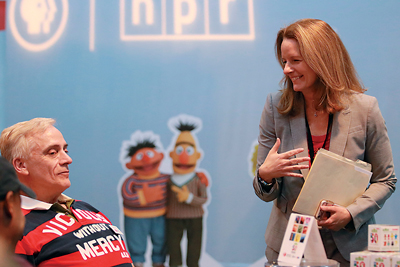
WCVE joined the radio landscape in 1988 when it purchased a public radio station from Union Theological Seminary in Richmond. The station, which was already a member of the National Public Radio (NPR) network, came on the air at 88.9 FM. In 2006, its reach was extended to the Northern Neck and Southside Virginia.
Operating under the umbrella organization known as the Commonwealth Public Broadcasting Corporation (CPBC), all holdings were branded collectively as the Community Idea Stations in 1990.
As with other public media stations, financial support had historically come in the forms of community donations, corporate sponsorships, and some federal funding. While those revenue streams continue, the CPBC received an influx of cash in March 2017, following the sale of two television stations in Northern Virginia.
The sale took place under a one-time auction sponsored by the FCC that was designed to make additional broadcast spectrum available to commercial wireless providers. The CPBC received nearly $182 million for the two stations. Some of those funds were used immediately for hiring and programming, but the bulk was placed within the Virginia Foundation for Public Media (VFPM), which became the governing entity for the CPBC, so interest on the principal could become part of the network’s revenue stream.
The sale was a game-changer, Swain says, even though local fans may have simply noticed dedicated stations for VPM News and VPM Music.
“The FCC spectrum auction presented a one-time opportunity for the station to sell an asset to bring in significant resources, which will ensure VPM’s sustainability for the long-term,” she says. “With the auction proceeds, we created an endowment that, with careful stewardship and a conservative spending policy, provides seed money for VPM to experiment and innovate with projects that we hope will garner community support.”
A New Era with Great Opportunity
Swain, who joined the network as CEO and president in January 2019, came to the job after ten years at PBS, where she served as senior director for PBS Digital and senior vice president for PBS and worked alongside the CEO and COO directing organization-wide initiatives.
As a newcomer, Swain says, she brought a “bird’s eye view” of the local system, moving the network away from divisions based on technology (television, radio, and digital) to “community impact areas” – arts, history, science, news, children’s education – so stories can be told across platforms.
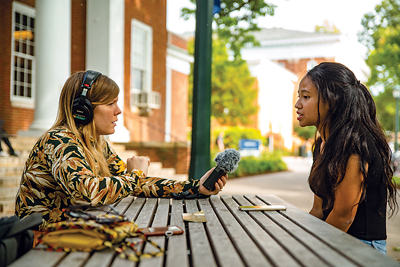
“We are thinking about the stories to tell and what is the best platform to tell them on,” she says. “The audience doesn’t receive content in traditional ways anymore; we need to be on all platforms. Our new strategy has us thinking digitally and putting the audience first.
“I think of VPM as a start-up,” she adds. “We can rethink what public media should look like in 2020. We have a great legacy to build on.”
She also spearheaded a re-branding, dropping Community Idea Stations in favor of VPM, Virginia’s Home for Public Media, which took effect in August 2019. That group of original stations, each with its own call letters, led to what Swain calls “a logo soup,” which highlighted the need for a new, streamlined image and name.
“Change is always hard, but the name change has been enthusiastically received,” she says. “You know you got it right when people thank you.
“We wanted a single name to bring all the stations together,” she says. “It’s short, simple, easy to remember. We hope it will transcend time and platforms.”
Something that hasn’t changed, Swain says, is the network’s commitment to telling stories that matter to Virginia residents.
“We are investing more in local content, particularly news,” she says. “People here notice the number of local stories we can cover. The constant in a time of change is that the mission has remained the same. We are here to educate, entertain, and inspire. We are anchored in trust, even as trust in the media is eroding. In polarizing times, hanging on to that trust is really important.”
Swain notes that more VPM-produced stories are finding their way to PBS and NPR broadcasts.
“We are telling Virginia stories, but they are being heard nationally,” she says. “It’s an opportunity for us to have national relevance on local stories. It shows the importance of content and production value that we have invested in.”
Telling the Stories
Craig Carper, VPM’s news director, has been with the network for nearly fifteen years, starting as a TV production assistant, then state capitol reporter. For six years, he was the network’s only full-time news reporter; two others were part-time and based at home.
Now, Carper is news director and oversees a team of fifteen reporters, editors, on-air hosts, and producers. Two of the most recent hires focus on digital news and production, amplifying “the different ways we can tell stories,” Carper says, adding the team’s three full-time editors are the “unsung heroes” of the newsroom.
“When you’re this small, every new person is a sea change,” he says. “With every additional position, you feel like you can take over the world for a few months, and then you’re brought back to reality. Energy and enthusiasm [new hires bring] is contagious; it’s very
good for the entire team.”
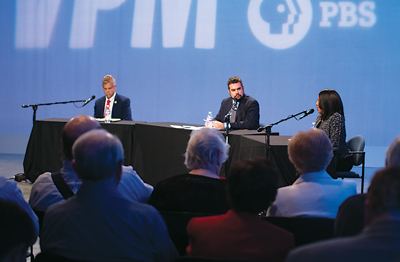
Carper says the news division has to be mindful of what’s possible, given the limited window of time available in NPR’s daily “Morning Edition” and “All Things Considered” programming. “We’ve got essentially two and a half minutes at a time to talk about what’s going on in the community,” he says. “We have to think ‘What rises to the level of us sending a reporter out to do a story?’”
The team focuses on government and education, and even has a legal reporter, which is useful when covering the State House and City Hall. “Our audience is mostly well-educated, and they are interested in public policy,” Carper notes. “You will hear [our reports] regularly on NPR. We’re the window on what’s going on in Central Virginia and the state, and the [U.S. Court of Appeals for the] Fourth Circuit.”
VPM typically doesn’t include news from the police blotter, unless the story is about a larger trend or issue. “We did make a conscious decision not to do crime reports,” Carper says. “We’re trying to do things from a broadcast sense that aren’t being covered on a daily basis elsewhere. While other broadcast outlets do education stories, they don’t do them every day. You could say the same about state and local government.”
Carper says the financial support that flows from the FCC sale changed the news team, in a good way. “For us, it meant we could think about ‘Who are we? What are we?’” he says. “We’re journalists, we’re storytellers, but we’re not in one content delivery bucket.
“How do we talk about the topics that have value to our audience, and what emphasis do we place for each story on those different platforms?”
News and View On Camera
Wrapping up its twenty-ninth season this spring, Virginia Currents is a weekly television show produced by VPM and broadcast in conjunction with PBS. Host and producer Amy Lacey joined the program in 2018 after spending more than fourteen years as a news reporter in Richmond at WRIC/Channel 8.
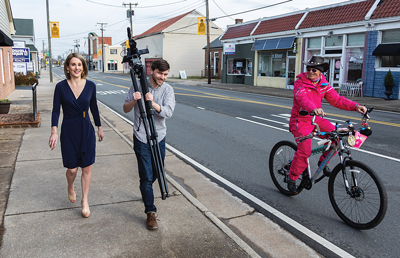
“When I interviewed, [executives] told me the mission of Virginia Currents is to inspire through storytelling and offer a sense of hope, no matter what the story topic is,” Lacey says. “This aligns beautifully with the VPM mission to educate, entertain, and inspire, and grow empathy within our communities. This appeals to the community servant I hope to be, and brings a sense of altruism that I hope to show in media.”
Lacey, who was raised on a farm in southwestern Pennsylvania, grew up watching PBS because cable television wasn’t available where she lived. As a student journalist at Duquesne University in Pittsburgh, she began working with the NPR station on campus. “I naturally gravitated to public media because I’ve been such a fan of it,” she says. “And I got to cover news with broadcast journalists who I had watched growing up.”
To remain relevant, Lacey says, the show has evolved, noting that decades-old story clips reveal a show that was often artisan-focused and felt folksy. “They brought me on because they wanted a proven journalist who can tackle serious news.”
Today, Virginia Currents programming might include
the occasional artist spotlight, but hones in on tough topics, such as mental health, cannabidiol (CBD) products, animal cruelty, and opioid addiction. Lacey says the point is to provide greater depth of coverage in a way that sparks action and conversation.
“Media have a huge responsibility to let people know what’s going on in the world; my show takes that responsibility to the next level,” she says. “It’s so important to cover the heavy topics… and I want to do it in a way that I would be comfortable having a child watch with a parent and discuss afterward.
“We are tackling those tough situations, but offer a nugget of hope,” she adds. “We take it to the next level and help people find resolution, whether that be through a resource
or a support group.”
Lacey says teachers have told her they will use segments from the show in the classroom, and online viewership data indicate when stories resonate broadly.
“We’ve had some segments that have really gotten a lot of traction online because they are something that’s not exploitative,” she says. “It’s the true story and can be used as an educational tool. That’s the greatest compliment you can get from your community.”
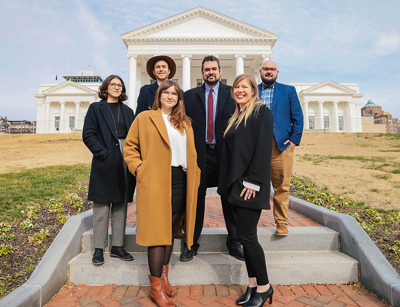
As the mother of a preschool-aged daughter, Lacey is acutely aware of the influence media can have. She’s thankful public media stations are still available to produce meaningful content.
“We’re getting back to basics with our show and the good that is happening in our communities,” she says. “With [public media], you know you’re getting the real deal. You’re not getting a slant, not an agenda. We are really there to serve the community and show the whole story.”
VPM in the Community
A grocery store might not seem like the place where families would connect with VPM, but it’s exactly where VPM wants to be, says CEO Swain. When The Market@25th, a new grocery store in Richmond’s Church Hill neighborhood, opened its doors in April 2019, VPM was there with PBS Kids resources and a new staff position.
“The beauty of a grocery store is that it’s where people go, where they are,” Swain says. “We are a public media entity; it’s our duty to be where people are. It makes perfect sense that we would enter into a community that is growing with our early childhood resources.”
Research indicates that ninety percent of brain development occurs before the age of five, and social determinants of health – the conditions in the places where people live, learn, work, and play – are critical factors for lifelong success. Karen Wells, who was hired by VPM to serve as East End engagement manager, says it’s her job to work with The Market@25th and the community to provide the best start possible for children and to support their families with resources about nutrition, reading, math, and healthy living.

“With PBS Kids, there’s a beautiful catalog of materials that supports early learning,” Wells notes. As the mother of a 7-year-old son, Wells knows this first-hand.
Inside the store, a VPM welcome wall offers information about in-store program offerings as well as educational activities for families to try as they shop and after they return home. VPM hosts engagement workshops in the store’s community room and provides a Little Free Library in the café area where families can read together or select a book to take home.
“We want to make our presence known, so families know what to expect from us,” Wells says.
The collaboration with The Market@25th’s management team is important to what VPM offers, Wells and Swain say, noting that early community listening sessions and ongoing dialogue help drive activities.
“We are still learning, and we expect it to evolve,” Wells says. “There are opportunities for community ownership of some of what we do and opportunities to develop community leadership.”
Born and raised in Church Hill, Wells lives in Varina with her family. She earned her master’s degree in education from VCU. “I have a personal and professional duty to want to see this grow,” she says.
Norm Gold, developer of The Market@25th, and store director Jae Scott, see the partnership with VPM as a natural component of the store’s goal to be part of the neighborhood.
“We have a mission to serve the community,” Gold says.
Scott adds: “Because a food store is usually the hub of the community it’s in, our mission was to bring not only healthy choices, but also options for better resources and educational opportunities. It’s an obvious choice to have [VPM PBS Kids] involved; they bring a whole world of resources. What they’ve done so far, and the response from customers, is incredible.”
Swain says the public-private collaboration between VPM at The Market@25th is a launching pad for other initiatives, noting that VPM is considering the creation of a book nook in a nearby East End laundromat.
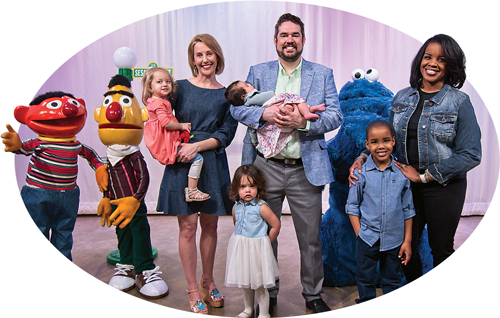
Moving Forward
“We want to think about other places where the model will work,” she says. “Public-private partnership is okay, and it’s important that we be there.”
Public media is simply different, she notes, because content is thoroughly vetted before it ever reaches the consumer.
“National PBS programming takes up to two years to get to market… so it can be just right. Some of my favorite stories come from people who say they learned English from watching Sesame Street or listened to ‘Morning Edition’ with Mom in the car on the way to school. That’s the start of what noncommercial media looks like, and you keep that with you,” Swain says. “I hope we can continue to pass that tradition on through generations.”
Photos: Louise Keeton, Crixell Matthews, Michael Simon, Scott Schwartzkopf




